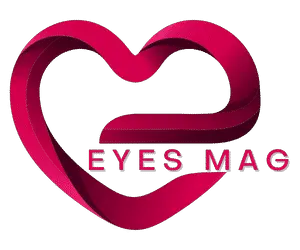Male Norse Gods and Female Goddesses
The Nordic pantheon of Norse gods and goddesses is a vast subject. We know many male Norse gods and female goddesses today. Their stories and legends have been used to tell stories about the past for hundreds of years.
Some of these stories have been turned into films, or TV shows that we can watch today. Here are 4 of the most important male Norse gods and 4 of the most important female Norse goddesses.
Norse mythology is one of the most extensive mythologies in the world. It is a complex system of gods and goddesses, heroes and monsters, zxdfsrf. The inspiring stories and tales have been passed down for centuries. And what about the rest of the story?
The gods are all male in Norse mythology, and the goddesses are all female. But what did they do together? Join us to explore the fascinating relationship between the Norse gods and goddesses.
What are Norse Gods and Goddesses?
Norse gods and goddesses were believed to be the most powerful beings in the universe. Not only were they stronger than humans, but they were stronger than other gods. Norse mythology describes the world’s creation, which powerful gods then ruled. These were the Norse gods, who were divided into two groups: Aesir and Vanir.
Norse gods and goddesses were the deities of the Norse people. These gods and goddesses were a pantheon—a group of gods and goddesses who were worshipped as a unit.
The Norse people believed that these deities controlled the elements, seasons, warfare, healing, childbirth, etc. In addition to these major gods and goddesses, the Norse pantheon also included a host of minor deities who governed specific aspects of life.
Male Norse Gods
There were two sets of gods in Norse mythology. The first one was the Aesir, and the other was the Vanir. The Aesir were the major gods, mostly worshipped by the Vikings. They were based in Asgard, ruled by Odin and his brothers. The Aesir included Thor, the *** of thunder, and Loki, the *** of mischief.
An Aesir has been the gods of war who guarded the Vikings. They also had some goddesses, like Frigg, the wife of Odin and the goddess of motherhood. The Aesir ruled the sky and the sea, and the Vikings mostly worshipped them.
Norse mythology is filled with gods and goddesses, but the pantheon was male-dominated. The most well-known gods were Odin, Thor, and Loki, and they tended to get the majority of the attention.
However, the Norse goddesses were just as powerful and influential as their male counterparts. Freyja was indeed the goddess of reproduction and love, whereas Freyr was the god of agriculture.
Other notable goddesses included Frigg (wife of Odin), Idunn (keeper of the golden apples), and Sif (wife of Thor). While the male gods may have been more vocal and prominent, the female goddesses should not be overlooked.
Female Norse Goddesses
The Viking era saw a lot of changes in the North of Europe, especially with their religion. This religion was known as Norse mythology and is well known for Norse gods and goddesses.
However, Norse mythology also had a lot of goddesses, many of which were important to the story of the gods. We will look at the female Norse gods and goddesses in this article and how they’re so important.
One of the most widely-known Norse goddesses is Freyja, the goddess of love, fertility and sex. She’s often depicted wearing a cloak of falcon feathers and riding a chariot pulled by cats.
Freyja is said to grant her worshippers’ wishes and bestow them with wealth and abundance. Another popular Norse goddess is Freya, the goddess of death. She’s often depicted holding a drinking horn and wearing a long cloak. Freya is said to preside over the underworld and guide the dead to their final resting place.
How to tell goddesses apart from Gods
It can be a little tricky to tell the difference between Norse goddesses and gods at first, but there are a few key clues. Goddesses are usually associated with nature and fertility, while gods are typically linked to power, strength, and war.
Additionally, goddesses often have more pronounced curves and features, while gods often have broader shoulders and more angular facial features. If you’re still unsure who’s who, refer to their attributes and powers—that should give you a good idea of which deity you’re dealing with!
How Norse mythology differs from other mythologies
Norse mythology is one of the lesser-known mythologies, but it’s no less fascinating. One of the most interesting things is how it differs from other mythologies. For example, there are more male gods than female goddesses in Norse mythology.
This stands in stark contrast to other mythologies, like Greek mythology, where there are more female goddesses than male gods. Additionally, while other mythologies typically focus on a few central characters, Norse mythology is sprawling and complex, with dozens of characters and stories. If you’re interested in Norse mythology, be sure to check out our collection of Thor’s Hammer pendants—they make the perfect gift for any fan of Norse mythology!
Conclusion
Out of all the Norse deities, the Gods came first. They were more powerful than the Goddesses. There were three male Norse Gods, Odin, Thor and Frey. Odin was the Father of most of the Gods and Goddesses. Thor was the *** of Thunder and Storms and the protector of mankind. Frey was the *** of fertility and the harvest.
The Goddesses were Freya, Frigga, Hel and Idun. Frigga was the wife of Odin and mother of Baldur. She was indeed the Love, Marriage, and Wisdom Goddess. Freya has been the Goddess of Love, Beauty, and ***. She had the most beautiful necklace in the world called Brisingamen. Hel was the Goddess of Death and the Realm of the Dead. She was also the mother of the Goddess of Memory. Idun was the Goddess of Spring and Youth.
One of the oldest mythologies is Norse mythology. It differs significantly from other mythologies regarding the featured gods and goddesses. While other mythologies typically have a pantheon of gods and goddesses, Norse mythology only has two genders and focuses on the interactions between the gods and goddesses.


















